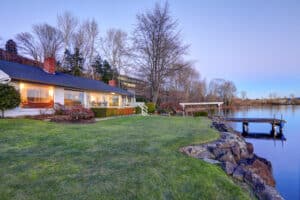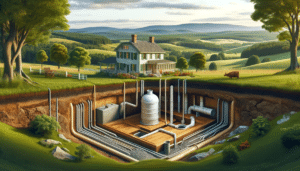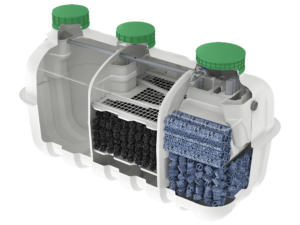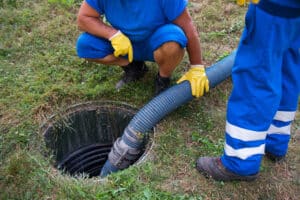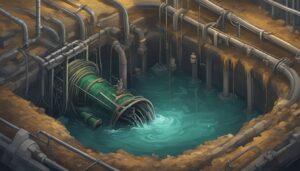Advanced septic systems are meant to help protect the environment by preventing pollutants from entering the ground and water table. They are also meant to protect people and animals from harmful pathogens and bacteria commonly found in wastewater.
But how exactly do they work?
How Does an Advanced Treatment System Septic Work?
Environmentally sustainable systems are becoming increasingly common to reduce nitrogen levels and also for disinfection.
But on a technical level, you must first understand why a traditional septic system may be a bad choice, depending on your location. The main issue stems from the leaching of nitrogen into the ground.
Once released into the ground, this nitrogen can contaminate local water sources and impact the environment.
An advanced septic system eliminates the release of nitrogen by:
- Actively converting ammonia in the system, from a person’s urine, into nitrates.
- Oxygen in the nitrates is removed by bacteria.
- Nitrogen gas is left behind.
Once in gaseous form, the nitrogen is safely released into the air (our atmosphere is composed of 78% nitrogen!) rather than make its way into the water table.
You can continue using your home’s plumbing as normal once a system is installed. To the homeowner, there’s very little difference between these types of systems and a standard septic.
But to the environment, the difference can be substantial.
In areas where wastewater makes its way into the harbor or drinking water, it can mean the difference between clean drinking water and contaminated water.
These advanced systems:
- are smaller in size
- require shorter drain fields
Depending on your location, you may or may not need to have an annual service visit performed on the system.
How Much Does an Advanced Septic System Cost?
The price of a septic system can vary greatly depending on things such as the:
- Size of your home
- Terrain of your property
- Number of bedrooms in your house
Advanced septic service providers will provide you with an accurate quote after an on-site evaluation.
Site work will need to be done, the old septic will need to be removed and you may potentially need new connections to the home if the system is older. System designers will assess the property to offer a system that effectively reduces the nitrogen levels produced by your septic system.
Local permits will be required, and the process can be complicated, especially if you’re trying to take advantage of funding in the form of grants and rebates that may be available in your area to cover the cost of installation.


